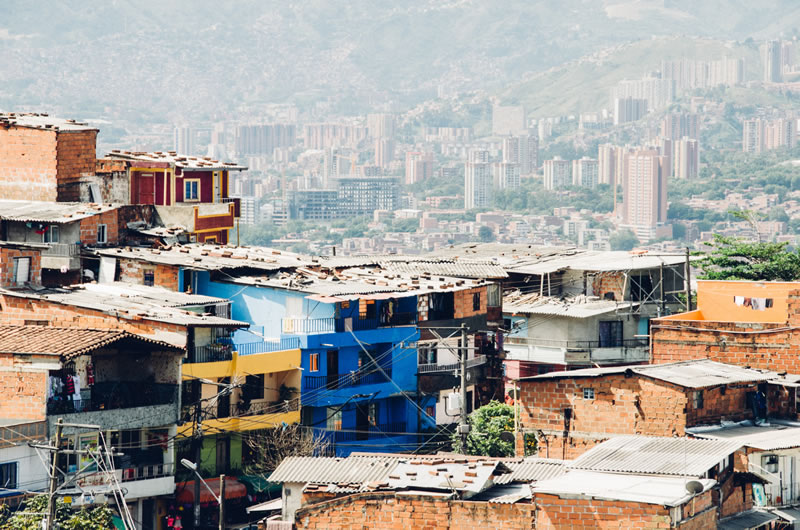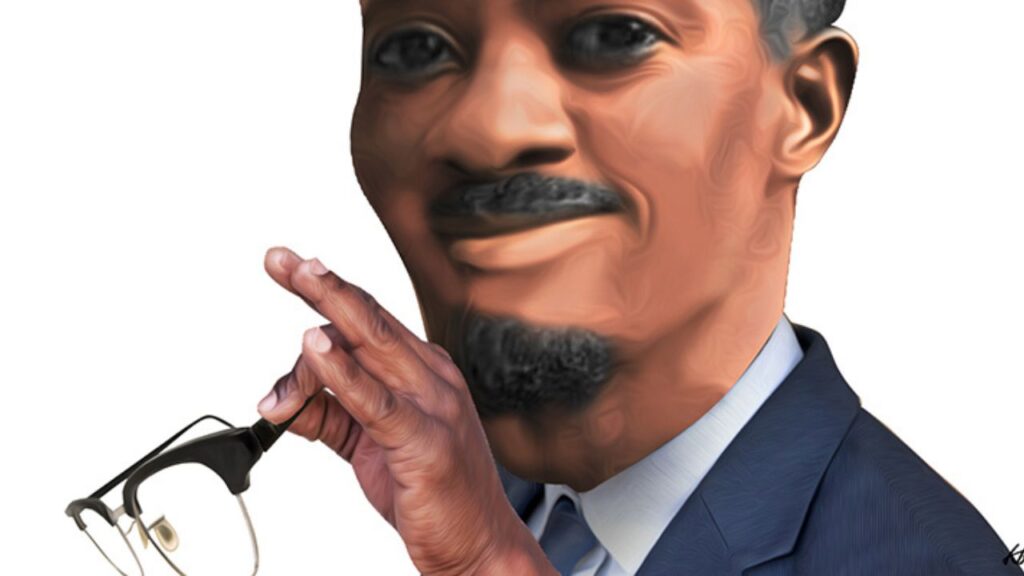The aftermath of the Great Recession of 2008-2009 was one of the defining economic developments of the 2010s. It was precipitated by financial crisis in the United States, which was triggered by the collapse of the subprime housing market bubble. It became the deepest and longest recession in the country’s history since World War II. The financial crisis has been attributed to lax public monetary policy, slack regulation of financial institutions, high levels of household and corporate debt, international trade imbalances, and poor corporate governance and accountability. For example, in the United States household debt rose from 77% of disposable income in 1990 to 127% in 2007. In some European countries, such as Denmark, Iceland, Ireland, the Netherlands, and Norway such debt even surpassed 200%.
The Great Recession left a trail of wanton economic devastation mostly in the United States and Europe. In the US, between 2007 and 2009, real GDP declined by 4.3%, the S&P 500 index dropped by 57%, unemployment rose to 10%, home prices fell by 30%, the poverty rate jumped to more than 15% of the population, and the net worth of American households and nonprofit organisations fell by 20%, from $69 trillion to $55 trillion. In some European countries, such as Cyprus, Greece, Ireland, Italy, and Portugal, the crisis became so severe that they were forced to default on national debt and seek bailouts from the European Union, European Central Bank, and the International Monetary Fund.
To contain the contagion and revive growth, many governments enacted fiscal stimulus packages, and austerity measures comprising tax increases and reductions in social benefits programmes. For their part, central banks cut rates and adopted quantitative easing, an expansionary monetary policy of injecting liquidity into the economy by buying assets. Rates of recovery in the 2010s were predictably slow and uneven, and varied by country and community, as well as the eternal structured inscriptions of class, ethnicity/race, and age.
It is generally agreed the Great Recession accelerated the growth of economic and social inequalities in the United States and around the world. This was one of its major consequences. Tens of millions of people lost their jobs, assets, and livelihoods, as well as control over their lives, dignity, and hope for the future. The policy responses favoured capital over labour, the wealthy at the expense of the middle and working classes, financial services over productive sectors. Fear, uncertainty, rage, and distrust of governments captured by business and often self-serving elites flared into a political and social inferno in many countries.
This is the combustible brew that greeted the 2010s, spawning widespread political instability and social struggles that gave rise to toxic tribalisms and populisms that were most effectively mobilised and manipulated by right-wing forces, as well as heightened recessions of, and resistances for, democracy, examined in the previous sections.
Employment was particularly battered. Employment trends during the 2010s reflected rates and patterns of economic growth and changing economic organisation. According to the ILO’s 2019 World Employment Social Outlook, from 2011-2018 the world economy grew at an average rate of 3.6%, a slight dip from 3.9% in 2001-2010. The percentage of the working age population in employment fell during the Great Recession and its immediate aftermath, and rose slowly thereafter, although by 2018 it was down to 58.4% compared to 62.2% in 1993. The majority of jobs were in informal employment, which in 2016 accounted for 2 billion jobs or 61% of all jobs. In terms of sectors, the share of manufacturing employment generally fell, while that of services rose and by 2018 the latter accounted for almost half of all employment.
Working conditions in both informal employment and services including the emerging gig economy largely remained poor. Nearly 700 million workers in low and medium income countries in 2018 lived in extreme or moderate poverty. The deficits in decent work remained alarmingly high, afflicting the majority of the 3.3 billion people employed globally, who suffered from persistent economic insecurity, and lack of equal opportunities for their wellbeing. Average real wage growth remained low and fluctuated, rising in some years and falling in others.
The unemployment rate in 2018, at 5%, was the same as in 2008, and lower than the 5.6% in 2009. Also evident was the prevalence and in some cases growth of underemployment or labour underutilisation. Needless to say, employment rates and conditions varied quite considerably according to levels of development, gender, and for the youth. Overall, employment indicators tended to be worse for low-income than high-income economies, and those in between, and in terms of gender for women compared to men, and were particularly challenging for the youth.
Nearly 700 million workers in low and medium income countries in 2018 lived in extreme or moderate poverty
For many countries, employment was a key feature of the difficult aftermath of the Great Recession and played an important role in engendering and sustaining income and wealth inequalities. Reports on growing global inequalities within and across countries abound in the academic literature, media, publications of development agencies, think tanks, and NGOs.
For example, according to Credit Suisse’s Global Wealth Databook 2018, 64% of the world’s adult population held less than 2% of global wealth, while less than 10% of the wealthiest individuals owned 84% of global wealth, and the richest 1% owned 45%. The growth of high net worth individuals—those with net worth assets of more than $1 million—was staggering.
While the largest numbers of the world’s high net worth individuals (HNWIs) were in the United States (41% in 2018), Europe, and China (7%), they rose even faster in Africa, the world’s least developed continent. According to the World Wealth Report 2018, the size of HNWIs in Africa in 2017 reached 169,970 who had a combined wealth of US$1.7 trillion (0.9% out of the 18.1 million HNWIs globally and 2.4% out of $70.2 trillion global HNWI wealth).
64% of the world’s adult population held less than 2% of global wealth, while less than 10% of the wealthiest individuals owned 84% of global wealth
Oxfam did much to publicise the scourge of growing inequalities in a series of alarming reports published to coincide with the World Economic Forum, the Davos jamboree of masters of the universe. Its report in 2015 showed the richest 1% increased its share of the world’s wealth from 44% in 2009 to 48% in 2014, while the least well-off 80% owned just 5.5%. In its 2017 report, entitled Economy for the 99%, it bemoaned the fact that eight multi-billionaires owed as much wealth as the poorest half of the world’s population. Its 2019 report claimed the wealth of 2,200 billionaires worldwide grew by 12%, while for the poorest half it fell by 11%.
Oxfam blames the obscene disparities on capital squeezing workers and producers while executives are grossly overpaid, crony capitalism and state capture, super-charged shareholder capitalism, and tax avoidance by the rich. As might be expected, the debate on global inequalities is extremely heated. Inequality received its intellectual imprimatur in Thomas Piketty’s academic blockbuster, Capital in the Twenty-First Century, published in 2013 that offered a voluminous and compelling account of wealth and income inequality in the United States and Western Europe over the last three centuries.
Piketty’s bestselling book received as much acclaim as criticism for its thesis, methodology, and conclusions underscoring how high the stakes are. In a lead story in its issue of November 30, 2019 The Economist, the haughty British magazine, returned to the topic with a predictable verdict, “Inequality Illusions.” It argues that the idea of soaring inequality rests on shaky analytical grounds and problematic data. Nevertheless, the magazine still conceded, “And even if inequality has not risen by as much as many people think, the gap between rich and poor could still be dispiritingly high.”
The richest 1% increased its share of the world’s wealth from 44% in 2009 to 48% in 2014, while the least well-off 80% owned just 5.5%
In the 2010s several global income inequality databases were created, such as the World Bank’s PovcalNet, the World Inequality Database, the OECD’s Income Distribution Database, the University of Texas Inequality Project Database, and The United Nations University’s World Income Inequality Database. Each focuses on a particular set of issues. Much of this work is reflected in the UNDP’s Human Development Report 2019, which makes sobering reading.
The report offers five key observations. “First, while many people are stepping above minimum floors of achievement in human development, widespread disparities remain”; “Second, a new generation of severe inequalities in human development is emerging, even if many of the unresolved inequalities of the 20th century are declining”; “Third, inequalities in human development can accumulate through life, frequently heightened by deep power imbalances”; “Fourth, assessing inequalities in human development demands a revolution in metrics;”; and “Fifth, redressing inequalities in human development in the 21st century is possible—if we act now, before imbalances in economic power translate into entrenched political dominance.”
The report urges the development of a new framework for analysing inequality that goes beyond income (“A comprehensive assessment of inequality must consider income and wealth. But it must also understand differences in other aspects of human development and the processes that lead to them”); beyond averages (“The analysis of inequalities in human development must go beyond summary measures of inequality that focus on only a single dimension”); and beyond today (“Inequalities in human development will shape the prospects of people that may live to see the 22nd century”).
In the 2010s, concerns over inequalities in income, wealth, capabilities and opportunities became widespread across political divides. While gaps in basic capabilities (such as access to basic education and health) across the world narrowed, they grew in terms of enhanced capabilities (including life expectancy at older ages and access to tertiary education). In the words of the UNDP report, “In all regions of the world the loss in human development due to inequality is diminishing, reflecting progress in basic capabilities.”

Globally, the loss fell from 23.4% in 2010 to 20.2% in 2018, ranging from 35.1% to 30.5% for sub-Saharan Africa, on one end to 16.1% to 11.7% for Europe and Central Asia on the other. The percentage with primary and secondary education grew more rapidly that tertiary education between 2007 and 2017 in all world regions. For sub-Saharan Africa it grew by about 9% and less than 2%, respectively, so that by 2017 more than 40% of the population had primary education compared to 2% with tertiary education. The ratios for the developed countries were more than 95% and 25%, respectively.
But not everyone benefited equally in the rising provision of basic capacities as millions of vulnerable populations remained trapped in the insidious horizontal inequalities of discriminatory policies and restrictive legal frameworks, and the dynamics of deeply entrenched historical, market, cultural, and gender biases that blocked them from meaningful and ameliorative social, economic and political participation. The UNDP report calls for more refined and timely studies of inequality using universally recognised statistics and comprehensive inequality databases.
The Great Recession did not affect all world regions equally. As noted above, many developing countries largely escaped its worst effects, although they experienced slower growth. Many of the economies in South America went into recession reflecting reduced demand in their main North American and European markets for their predominantly primary commodity exports.
Economic growth continued in much of Africa, save for countries like South Africa that went into recession, but at lower rates than before. This reflected the resilience of the continent’s recovery since the 1990s and the reorientation of its major trading partners from the western countries to the rising economic giants of Asia, especially China and India, where growth remained robust, as it was in Indonesia and Bangladesh. For its part, South Korea barely escaped recession.
The uneven effects and limited impact of the Great Recession on China and India pointed to an emerging phenomenon in the world economy that accelerated in the 2010s, namely, the decoupling of growth trajectories between the historically dominant economies of Western Europe, the United States, and Japan and the emerging economic powerhouses of the 21st century. This is another major consequence of the Great Recession which became more apparent in the 2010s and is leading to the reshuffling of global hegemonies and hierarchies, which will be discussed in the next section.
While the heady projections of the future made in the late 2000s and early 2010s for some of the emerging economics in the BRICS (Brazil, Russia, India, China, and South Africa) and other configurations (MINT—Mexico, Indonesia, Nigeria, Turkey; and Next 11–Bangladesh, Egypt, Indonesia, Iran, Mexico, Nigeria, Pakistan, the Philippines, Turkey, South Korea, and Vietnam), have faded, the fact remains that these economies assumed a much greater share of global economic output, a trend that continued in the 2010s.
For example, as I noted in my book on Africa’s Resurgence referred to earlier, between 1990 and 2012 the relative share of the BRICS of World GDP increased by some 3.6 times so that they accounted for 56% of world GDP growth. By 2012 the BRICS claimed about 20% of world GDP compared to 24% for the European Union and 21% for the United States. The BRICS accounted for 43% of world reserves of foreign exchange, and increased their share of total world trade to 21.3% as compared to 25% for the EU and 27% for the US.
Shifting Global Hierarchies and Hegemonies
Clearly, global hegemonies and hierarchies shifted in the 2010s at global and regional levels. In terms of intra-regional shifts, World Bank data shows that, in Africa, Nigeria overtook South Africa to become the continent’s largest economy in 2012 ($459.4 billion to $396.3 billion in current US dollars). In East Africa, Ethiopia overtook Kenya as the largest economy in Eastern Africa in 2015 ($64.6 billion to $64.0 billion). In terms of purchasing power parity (PPP), by 2018 the size of the Nigerian economy was $1,117.4 billion compared to South Africa’s $768.3 billion, while it was $219.0 billion for Ethiopia and $176.4 billion for Kenya. In PPP terms, in 2018 Egypt’s economy was actually the continent’s largest, at $1,189.0 billion.
An even more remarkable development during the 2010s was the rising share of the global economy by middle-income countries. According to a World Bank report, from the 2000s to the mid-2010s their share rose from 17% to 35% (4% to 8% for lower middle-income countries and 13% to 27% for upper middle-income countries). In the meantime, the share of global GDP by higher-income countries declined from 83% to 64% during the same period. In terms of purchasing power parity, in 2018 the middle-income countries claimed 53.6% of global GDP ($72.7 trillion out of $135.5 trillion). The respective shares for the lower middle-income and upper middle-income countries was $22.9 trillion and $49.7 trillion, which translated into 16.9% and 36.7% of the global economy, respectively.
The biggest economic story of the decade, indeed, the last thirty years was the exponential rise of China. In terms of purchasing power parity, China overtook the United States as the world’s largest economy in 2014. By 2018, the size of the Chinese economy towered at $25.3 trillion, compared to $20.7 trillion for the American economy, although in terms of per capita incomes the latter was still ahead—$63,390 compared to $18,140. China’s re-emergence as the world’s largest economy returned the country to a position it had enjoyed a few centuries before. This phenomenal growth enabled China to lift hundreds of millions of people from poverty, an achievement almost unparalleled in human history.
The story of China is an integral part of Asia’s resurgence into the world’s economic center, and the historic decline of Europe and North America that have been dominant since the first industrial revolution. In 2018, the five leading Asian economies, China, India, Japan, Indonesia, and South Korea, accounted for 34.5% of the world economy. By the end of the 2010s, four Asian countries were among the top ten economies in the world: China ($25.3 trillion in 2018), the United States ($20.7 trillion), India ($10.4 trillion), Japan ($5.6 trillion), Germany ($4.6 trillion), Russia ($3.9 trillion), Indonesia ($3.4 trillion), Brazil (3.3 trillion), France ($3.1 trillion), and the United Kingdom ($3.0 trillion).
Africa seemed nowhere near achieving Asia’s extraordinary feat, although it became popular in the 2010s to celebrate Africa Rising/Rising Africa. The new rhetoric of Afro-optimism clearly sought to countervail the Afro-pessimism rampant during the continent’s “lost decades” of the 1980s and 1990s. The media often trumpeted that six or seven of the world’s ten fastest growing economies were in Africa. In 2018 there were five (Guinea, Côte d’Ivoire, Libya, Ethiopia and Senegal).
But the reality is that no African country has yet to achieve decades of high and sustained economic growth experienced in Asia. This is clear from the fact that the list of Africa’s fastest growing economies shifts every so often. Many of the Asian tigers consistently achieved growth rates that were far above population growth for three decades or more. According to data from the International Monetary Fund, Africa’s growth rate, which reached 6% in 2005 fell to 5.8% in 2010, to 3.5% in 2015, and rose slightly to 3.8% in 2018, remained too low to achieve profound transformation in human development. It is instructive that Africa’s growth rates during these years were below the averages for the developing economies as a whole (7.2% in 2005, 7.4% in 2010, 4.3% in 2015 and 4.9% in 2018).
The rise of Asia, led by China, which was consolidated in the 2010s, has generated an extensive literature. This historic transformation has been attributed to all sorts of complex historical, political, socio-economic, and geopolitical factors and forces. It is possible to argue that after World War II, and for some after independence, Asian countries constructed far more cohesive and strategic developmental states, undergirded by inclusive economic, political, and social institutions, and massive investments in human capital development, than other regions in the global South. Also, they aggressively pursued state capitalism, which was reinforced following the Asian crisis of 1997, in the face of fierce opposition and often misguided advice from the gendarmes of the Washington Consensus of neo-liberal free market fundamentalism.
The biggest economic story of the decade, indeed, the last thirty years was the exponential rise of China
It was quite clear that the 2010s witnessed historic shifts in global power from EuroAmerica to Asia in general, and from the United States as the sole post-Cold War superpower to fierce hegemonic rivalry with China, the ascendant superpower of the 21st century. One British academic and journalist, Martin Jacques goes so far as to argue in a recent commentary in the British newspaper, The Guardian, that “This decade belonged to China. So will the next one.” He noted that “Prior to the western financial crisis, it had been seen as the new but very junior kid on the block. The financial crash changed all that,” which had huge consequences for the western world’s “stability and self-confidence.”
The West, Jacques continues, has displayed “a kaleidoscope of emotions from denial, dismissal and condemnation to respect, appreciation and admiration; though there is presently much more of the former than the latter. The rise of China has provoked an existential crisis in the US and Europe that will last for the rest of this century. The west is in the process of being displaced and, beyond a point, it can do nothing about it.” Particularly galling has been the rise of China from a technological copycat into an innovation juggernaut for the defining technologies of the 21st century through its $300 billion “Made in China 2025” plan. The country has also moved from a cautious global player into a more assertive power through its ambitious belt and road initiative, targeted at the developing world and designed as the harbinger of a new world order.
The 2010s represented the beginning of a historic hegemonic shift in the world system. Such shifts are very rare in world history. This is the third potential shift in the last three centuries. The first was in the late 19th and early 20th centuries that pitted Britain, the world’s first industrial nation, and Germany the rising continental European industrial power. It culminated in World War I. The second arose out of the ashes of World War II that saw the devastated imperial powers of Europe replaced by two new superpowers, the United States and the former Soviet Union. As I noted in a longer paper on current hegemonic rivalries, such moments often reflect and are accompanied by profound political, economic and structural crises and changes.
Deluged by the cacophony of daily news, it is easy to get distracted by the endless punditry in the media and the pronouncements of American and Chinese leaders, especially with America’s unconventional and unhinged president with his tweeter storms. At stake is the demise of the post-World War II order that the USA created and disproportionately benefitted from. The decomposition of this order antedated Presidents Donald Trump and Xi Jinping, and will outlive them. The US and Chinese economies are so intertwined that decoupling will be extremely costly to both countries, and to the rest of the world. But hegemonic transitions have their own logic that often defies the cold calculus of costs. The 2020s will tell where the bitter rivalry between the declining and rising superpowers is headed. The rest of the world will be forced to adjust accordingly.
The latest issue of The Economist (January, 2020) offers a fascinating portrait of China’s breathtaking technological advances. It shows the progress Chinese companies have made in older and imported industries including nuclear reactors, high-speed railways, electric cars, and laser technologies. The country has also gradually moved up in the microprocessing value chain, and is investing heavily in robotics, the internet of things and artificial intelligence. In some areas China is working hard to become a global leader, such as in 5G technology, or is already ahead, for example in the application and use of face recognition technologies. The latter technologies are a double-edged sword, as they facilitate the enforcement of state digital espionage—what some call algorithmic surveillance, whose implications for human rights and individual freedoms is portentous.








